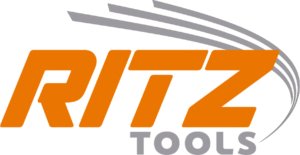
The world is evolving at a rapid pace, and so is the electrical infrastructure that powers it. As we look to the future, several key trends and technologies are set to redefine how we approach electrical systems. In this blog post, we’ll delve into the future of electrical infrastructure, focusing on the tools, trends, and techniques that are shaping the industry.
Smart Grids: The Backbone of Modern Infrastructure
Smart grids are no longer a concept of the future; they’re here now. These intelligent systems use real-time data to optimize electricity distribution. They can automatically reroute power during outages and integrate renewable energy sources. The adoption of smart grids is crucial for enhancing the reliability and efficiency of electrical infrastructure.
IoT and Big Data: Making Informed Decisions
The Internet of Things (IoT) and Big Data are revolutionizing how we manage electrical systems. Sensors placed throughout the grid collect valuable data. This information is then analyzed to improve performance, predict maintenance needs, and reduce waste. The insights gained are invaluable for making informed decisions.
Automation and AI: The Future of Maintenance
Artificial Intelligence (AI) and automation are set to transform maintenance procedures. Drones equipped with advanced sensors can inspect power lines and substations. AI algorithms can then analyze the data to predict equipment failures before they happen. This proactive approach minimizes downtime and extends the lifespan of electrical components.
Cybersecurity: Protecting the Grid
As electrical systems become more interconnected, the risk of cyberattacks increases. Robust cybersecurity measures are essential for protecting the integrity of the grid. Advanced encryption techniques and multi-factor authentication are just a few of the methods being employed to safeguard our electrical infrastructure.
The future of electrical infrastructure is bright, filled with innovative tools, trends, and techniques. From smart grids and renewable energy integration to IoT, Big Data, and cybersecurity, the industry is undergoing a transformative shift. By embracing these advancements, we can create a more efficient, sustainable, and secure electrical infrastructure for generations to come.
What are smart grids and how do they improve electrical infrastructure?
Ritz Tools offers a range of smart grid solutions that enhance the efficiency and reliability of electrical infrastructure. By using real-time data analytics, these smart grids can automatically reroute power during outages and balance loads, ensuring a more stable and resilient system.
How is renewable energy being integrated into modern electrical systems?
With Ritz Tools’ advanced inverters and battery storage systems, integrating renewable energy sources like solar and wind into the electrical grid has never been easier. These tools allow for seamless energy storage and distribution, making the grid more sustainable and cost-effective.
What role does IoT and Big Data play in the future of electrical infrastructure?
IoT and Big Data are integral to Ritz Tools’ approach to modernizing electrical infrastructure. Their sensor technologies collect data from various points in the electrical grid, which is then analyzed to optimize performance, predict maintenance needs, and reduce waste.
How are AI and automation transforming electrical infrastructure maintenance?
Ritz Tools employs AI algorithms and automation in their maintenance solutions. Their drones equipped with advanced sensors can inspect power lines and substations, while AI algorithms analyze the data to predict and prevent equipment failures, thereby minimizing downtime.
What cybersecurity measures are essential for safeguarding electrical infrastructure?
Cybersecurity is a top priority for Ritz Tools. Their infrastructure solutions come with robust security features, including advanced encryption techniques and multi-factor authentication, to protect against unauthorized access and cyberattacks.


